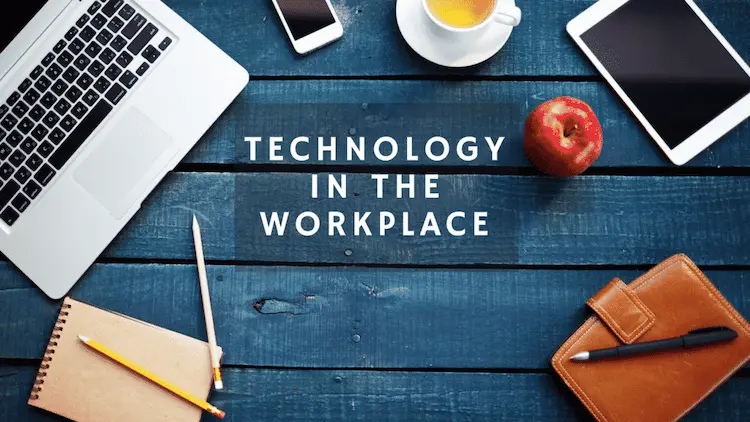Tired of searching for office supplies in crowded workstations and tiny meeting rooms? Fear not, because we’ve got the solution to your space utilization issues!
In a world where every square inch counts, technology tools have emerged as the superheroes of efficient workplaces. They swoop in, armed with sensors, data analysis, and digital magic. So are you ready to transform your workspace into a productivity paradise? Buckle up! because we’re about to embark on a quirky adventure through the land of maximizing space utilization.
Link Between Space Utilization and Technology
The link between technology and space utilization in an office is powerful, as technology plays a crucial role in optimizing and maximizing the efficient use of available space. Here are some key ways in which technology influences space utilization:

Data-Driven Insights:
Technology tools such as sensors, occupancy trackers, and smart building systems collect valuable data on space utilization patterns. This data shows space usage, underutilization, and bottlenecks. By analyzing this data, businesses can make informed decisions about space allocation and design, optimizing layouts for better utilization.
Workspace Management Systems:
Advanced software platforms and applications enable effective management of office spaces. Desk and room booking systems allow employees to reserve workstations, meeting rooms, or system 2 cubicles based on their specific needs. These systems prevent the underutilization of spaces by ensuring that resources are utilized efficiently, eliminating wasted space, and reducing the need for excessive square footage.
Flexible Work Environments:
Technology has enabled the rise of flexible work arrangements, such as remote work and hot desking. Cloud-based collaboration tools, virtual meeting platforms, and digital document management systems enable employees to work from anywhere, reducing the need for dedicated office space. Hot desking systems allow employees to choose a workspace on demand, ensuring optimal utilization of available desks.
Also Read: How to Be More Flexible at Work: 7 Ways to Adapt to Changes
Digital Storage and Document Management:
Digital transformation has revolutionized how businesses store and manage information. Cloud storage solutions and document management systems allow organizations to reduce their reliance on physical file cabinets and paper documents. By digitizing files and embracing digital storage, businesses can free up valuable office space, making room for other productive activities.
Also Read: Simplify Your Workload with These Top 5 Document Management Software Solutions
Communication and Collaboration:
Technology facilitates seamless communication and collaboration among team members, regardless of physical location. Video conferencing tools, instant messaging platforms, and project management software enable real-time collaboration, reducing the need for large meeting rooms or dedicated collaboration spaces to maintain a virtual team. This flexibility in communication encourages the use of shared spaces and optimizes the allocation of resources.

Space Design and Planning:
CAD and VR software enhance space design and planning. These tools let companies design and optimize office layouts based on workflow, staff needs, and space efficiency. By leveraging technology in space planning, organizations can create work environments that maximize productivity and minimize wasted space.
Technology empowers businesses to gather data, manage resources efficiently, enable flexible work arrangements, streamline communication, and optimize space utilization. By leveraging technology tools and solutions, organizations can make informed decisions about office space, leading to more efficient and productive workplaces.
What Are Modern Furniture with Tech Integrated For Office?

Modern furniture with integrated technology offers a seamless blend of functionality, comfort, and connectivity in the office environment. Here are some examples of such furniture:
Smart Desks:
Smart desks feature integrated technology like built-in power outlets, USB ports, and wireless charging pads. These desks enable employees to conveniently charge their devices and stay connected without the hassle of tangled cables. Some smart desks are height-adjustable, allowing users to sit or stand for better ergonomics.
Interactive Whiteboards:
Interactive whiteboards combine traditional whiteboard functionality with digital features. These interactive displays allow users to digitally write, draw, and present ideas while integrating with collaboration software. They often come equipped with touchscreens, multimedia capabilities, and connectivity options for seamless collaboration during meetings or brainstorming sessions.
Smart Office Chairs:
Smart office chairs are designed to enhance comfort and productivity while incorporating tech features. Some models have built-in sensors that monitor posture and provide feedback to help users maintain healthy sitting positions. Additionally, certain smart chairs feature adjustable lumbar support, seat heating/cooling, and even integrated speakers for multimedia experiences during work breaks.
Wireless Charging Furniture:
Wireless charging furniture eliminates the need for cables and adapters by integrating wireless charging capabilities directly into surfaces. Desks, coffee tables, and lounge seating with built-in wireless charging pads allow users to charge their smartphones or other compatible devices simply by placing them on the surface, reducing clutter and keeping devices powered throughout the day.
Soundproof Pods:
Soundproof pods or privacy booths offer isolated spaces within the office environment for focused work, private phone calls, or video conferences. These pods have acoustic materials, ventilation systems, and integrated technology like power outlets, lighting controls, and connectivity options. They provide employees with a quiet and controlled environment while staying connected to the digital world.
Smart Lighting Systems:
Smart lighting systems integrate with technology platforms and sensors to adjust lighting levels based on occupancy, natural light, or pre-set preferences. These systems often include motion sensors, daylight sensors, and programmable controls. They enhance energy efficiency and create personalized lighting experiences that contribute to employee well-being and productivity.
Why is Office Space Utilization Important?
Office space utilization is important for several reasons:
- Cost Efficiency: Efficient utilization of office space helps minimize unnecessary expenses. Businesses can avoid leasing or owning more space than needed by making the most available space and reducing rent or construction costs. Optimal space utilization also decreases maintenance, utilities, and furnishings expenses, resulting in significant cost savings.
- Productivity and Collaboration: A well-utilized office space can foster a productive and collaborative work environment. When space is efficiently designed and allocated, it promotes effective communication, interaction, and teamwork among employees. Properly utilized spaces provide designated areas for focused work, collaborative projects, meetings, and social interactions, enhancing productivity and engagement.
- Employee Well-being: Office space utilization impacts employee well-being and satisfaction. A crowded or cluttered workspace can lead to stress, reduced concentration, and decreased job satisfaction. On the other hand, a well-organized and optimized workspace improves comfort, reduces distractions, and promotes a positive work atmosphere, leading to improved employee morale and well-being.
- Flexibility and Adaptability: Efficient space utilization allows businesses to adapt to changing needs and accommodate growth or downsizing. By clearly understanding how space is utilized, organizations can reconfigure layouts, allocate resources, and implement flexible work arrangements more effectively. This agility enables businesses to respond quickly to evolving market demands and optimize their operational efficiency.
- Sustainability: Effective space utilization contributes to business sustainability. By utilizing space efficiently, businesses can reduce their carbon footprint and minimize energy consumption. Using less physical space also leads to reduced material usage and waste generation. Employing sustainable space utilization practices aligns with corporate social responsibility goals and demonstrates a commitment to environmental stewardship.
- Employee Experience and Attraction: A well-utilized office space can positively impact the employee experience and attract top talent. A thoughtfully designed workspace that maximizes natural light, provides comfortable amenities, and supports various work styles can create an appealing and engaging environment. This can enhance employee satisfaction and help attract prospective employees who value a well-designed workplace.
Key Office Space Utilization Metrics Every Facility Manager Must Follow

Facility managers play a critical role in optimizing office space utilization. To effectively track and improve space utilization, here are key metrics they should follow:
- Occupancy Rate: This metric measures the percentage of occupied space concerning the total available space. It provides an overall picture of how well the office space is utilized. Monitoring occupancy rates help to identify underutilized areas that can be repurposed or redesigned to maximize efficiency.
- Desk Utilization: Desk utilization measures the usage of individual workstations or desks. By tracking the number of occupied desks compared to the total number available, facility managers can identify areas with low utilization and explore solutions such as hot-desking or flexible seating arrangements.
- Meeting Room Utilization: Meeting rooms are often in high demand, and tracking their utilization is essential. Metrics such as the number of meetings scheduled versus the number of meetings held can indicate if there are excessive or insufficient meeting spaces. This information allows facility managers to optimize room allocation and adjust the number and size of meeting rooms accordingly.
- Utilization by Department or Team: Analyzing space utilization on a department or team level provides valuable insights. Facility managers can identify departments with higher or lower utilization rates, allowing for targeted interventions. For example, teams with low utilization may benefit from shared spaces or adjustments in their allocated areas.
- Space Utilization Trends: Tracking space utilization over time helps identify patterns and trends. Facility managers can identify peak utilization periods, assess the impact of changes or initiatives, and make data-driven decisions regarding space allocation, layout modifications, or facility expansions.
- Amenities and Common Areas Usage: Evaluating the utilization of amenities and common areas, such as cafeterias, lounges, or breakout spaces, provides insights into how well these spaces are utilized and if adjustments are needed. Facility managers can identify areas where enhancements or adjustments can improve employee engagement and satisfaction.
- Walk-throughs and Observations: Conducting regular walk-throughs and observations can complement quantitative metrics. Facility managers can visually assess space usage, identify bottlenecks, observe employee behaviors, and gather qualitative insights that inform improvements in space utilization.
Conclusion
Efficient office space utilization is crucial for cost efficiency, productivity, sustainability, and attracting top talent. By optimizing space usage; businesses can maximize resources, foster collaboration, enhance employee satisfaction, and create a flexible and sustainable work environment. Prioritizing efficient space utilization brings numerous benefits that contribute to the organization’s overall success.